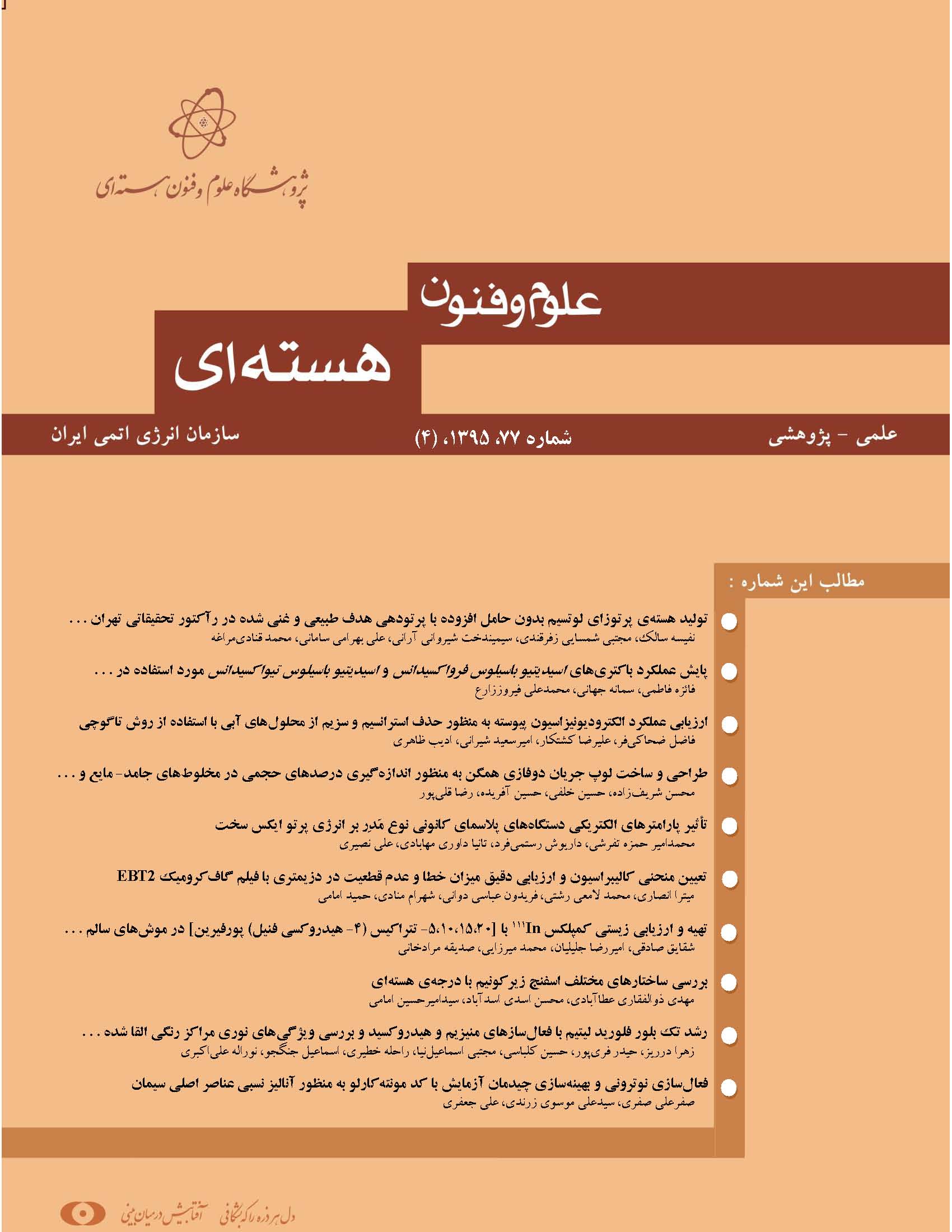نوع مقاله : مقاله پژوهشی
نویسندگان
1 پژوهشگاه علوم و فنون هستهای، سازمان انرژی اتمی ایران،
2 پژوهشکدهی چرخهی سوخت هستهای، پژوهشگاه علوم و فنون هستهای، سازمان انرژی اتمی ایران
3 دانشکدهی مهندسی هستهای، دانشگاه شهیدبهشتی
چکیده
در این مطالعه، ابتدا تأثیر زمان بر بازدهی حذف استرانسیم از محلولهای آبی به روش الکترودیونیزاسیون پیوسته با رزین پروتونه شده بررسی شد. سپس با استفاده از روش طراحی آزمایش تاگوچی، یک آرایهی متعامد L9 برای بررسی تأثیر ولتاژ، دبی و غلظت خوراک به منظور حذف استرانسیم و سزیم با روش الکترودیونیزاسیون پیوسته با رزین اشباع شده به کار گرفته شد. از روش آنالیز واریانس برای ارزیابی تأثیر نسبی هر فاکتور استفاده شد. عملکرد سیستم الکترودیونیزاسیون با افزایش ولتاژ به کار رفته و کاهش دبی، بهبود یافت. ولتاژ، بیشترین تأثیر را بر عملکرد الکترودیونیزاسیون پیوسته داشت و غلظت، تأثیر محسوسی بر حذف استرانسیم و سزیم نداشت. حذف این دو عنصر از محلولهای دوجزئی نیز بررسی شد و در این آزمایش نیز بازدهی حذف استرانسیم از سزیم بیشتر بود. نتایج نشان داد که روش الکترودیونیزاسیون یک روش مؤثر برای حذف استرانسیم و سزیم از محلولهای آبی است.
کلیدواژهها
عنوان مقاله [English]
Performance Evaluation of Continuous Electrodeionization (CEDI) for Removal of Strontium and Cesium from Aqueous Solutions Using Taguchi Method
نویسندگان [English]
- A.R Keshtkar 1
- F Zahakifar 2
- A. S Shirani 3
- A Zaheri 2
چکیده [English]
In this study, initialy the effect of time on the removal of strontium from aqueous solutions by continuous electrodeionization (CEDI) with H+ form resin was investigated. Then, by using an orthogonal L9 array in the Taguchi method, the effect of voltage, flow rate and feed concentration on the removal of Sr and Cs from aqueous solutions by the CEDI with the saturated resin was applied. The analysis of variance (ANOVA) method was used to evaluate the relative effect corresponding to each factor. The results showed that by increasing the applied voltage and decreasing the flow rate improve the performance. The effect of input voltage was more significant and the feed concentration did not have any perceptible effect on the Sr and Cs removal efficiency. The removal of both elements from binary solutions were also investigated. In this experiment, the removal efficiency of Sr was also found to be higher than those of Cs. Based on the results, electrodeionization was considered to be effective for Sr and Cs removal from aqueous solutions.
کلیدواژهها [English]
- Electrodeionization
- Strontium
- Cesium
- Aqueous Solutions
- Taguchi
- ANOVA

